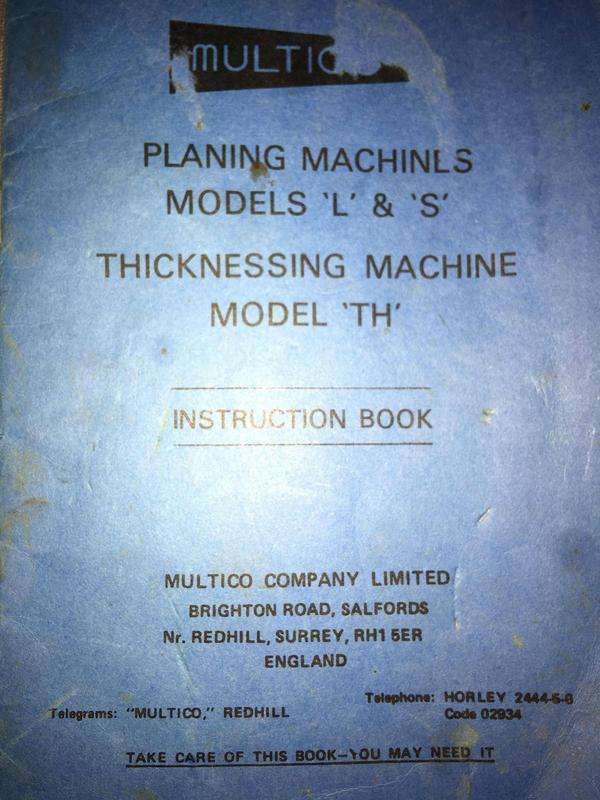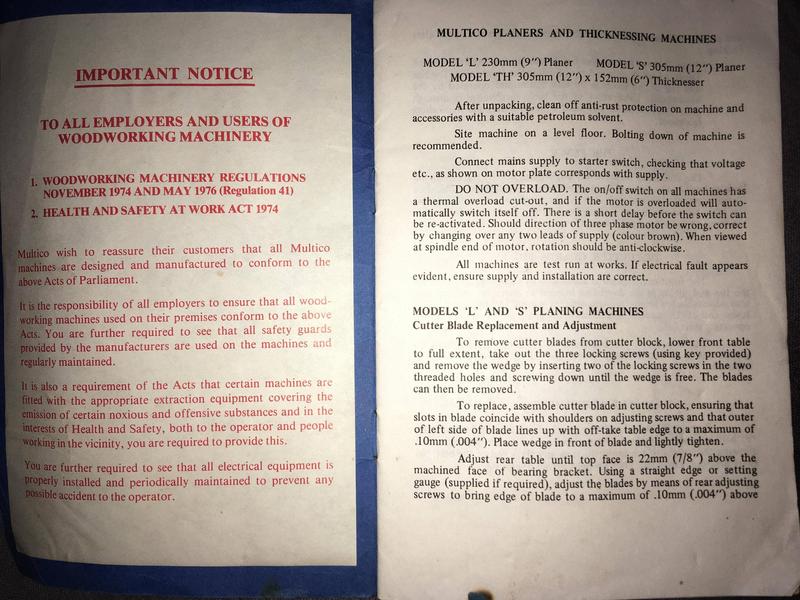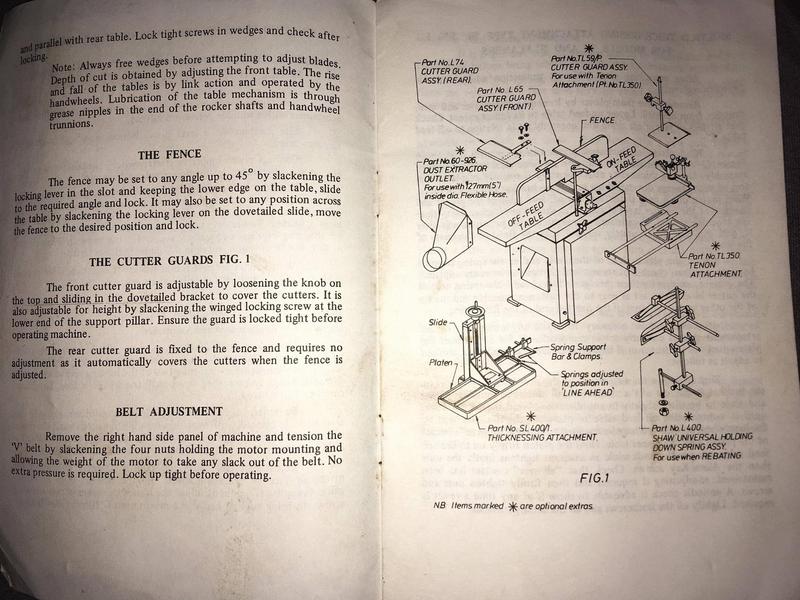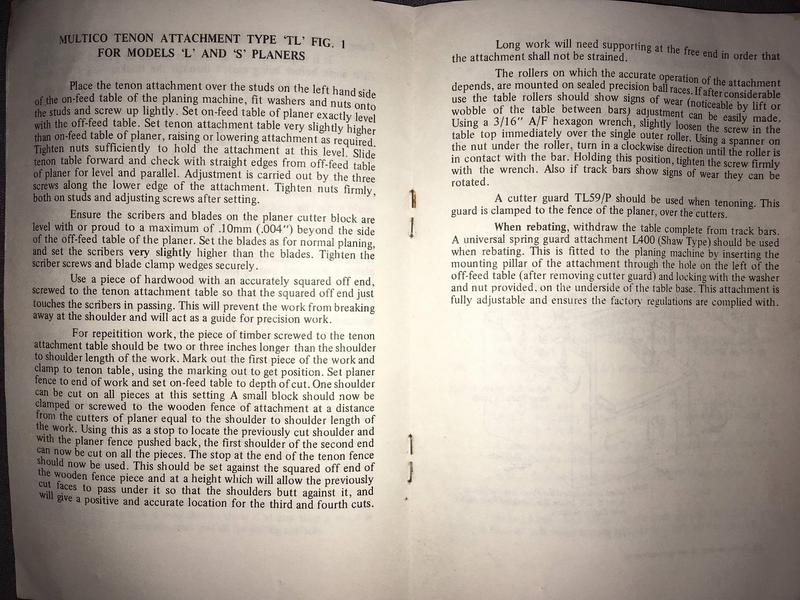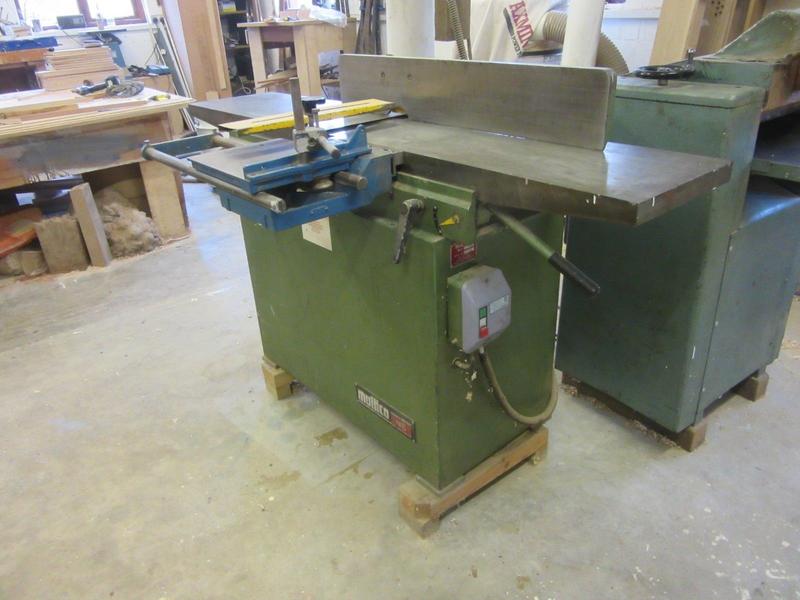Deadeye
Established Member
I'm toying with buying a replacement planer (wider).
It's an old lump of iron, which always seems a good thing. However the cutter block is 2 knives only (my current is three). Does it matter?
Also anyone have a manual for a multico sl9?
It's an old lump of iron, which always seems a good thing. However the cutter block is 2 knives only (my current is three). Does it matter?
Also anyone have a manual for a multico sl9?




